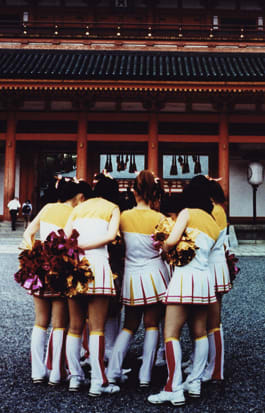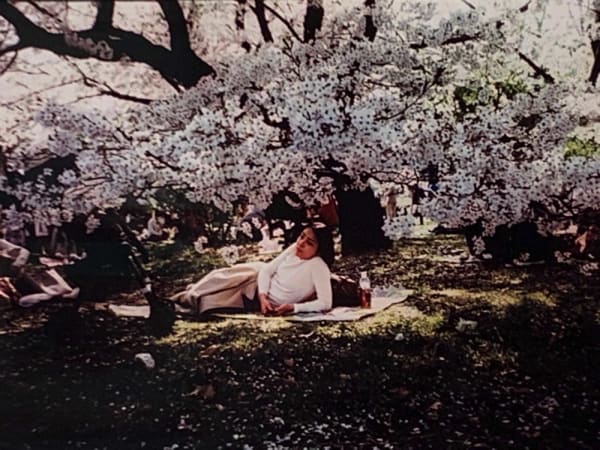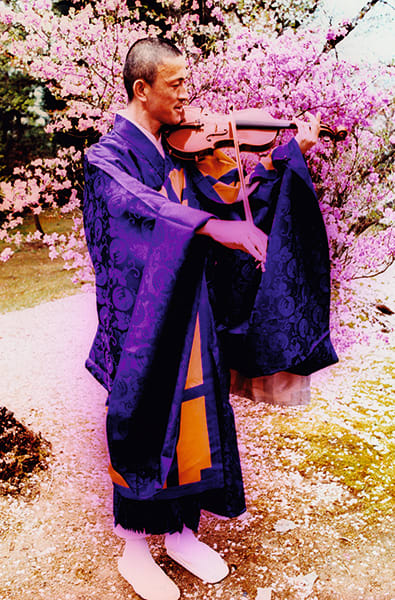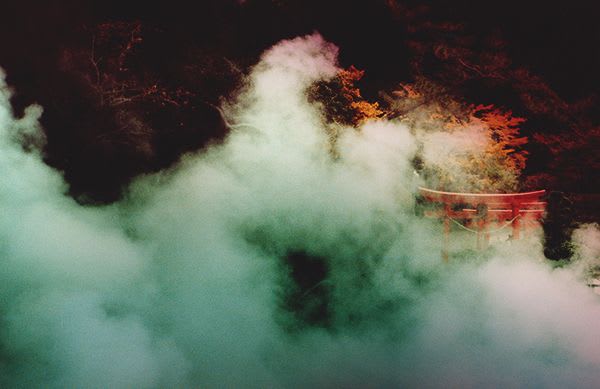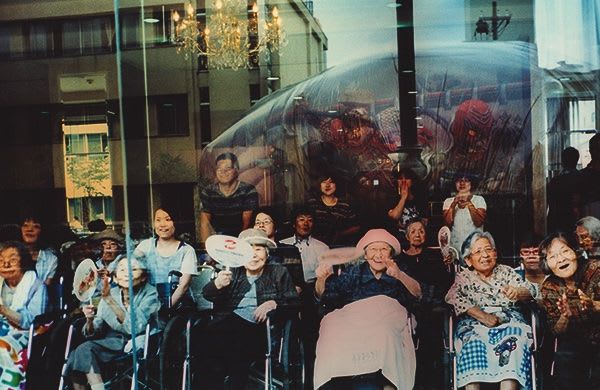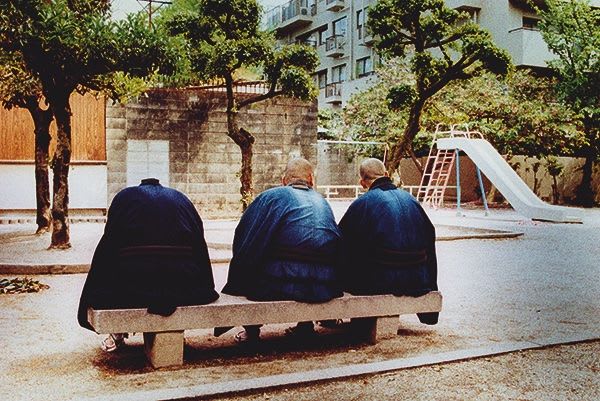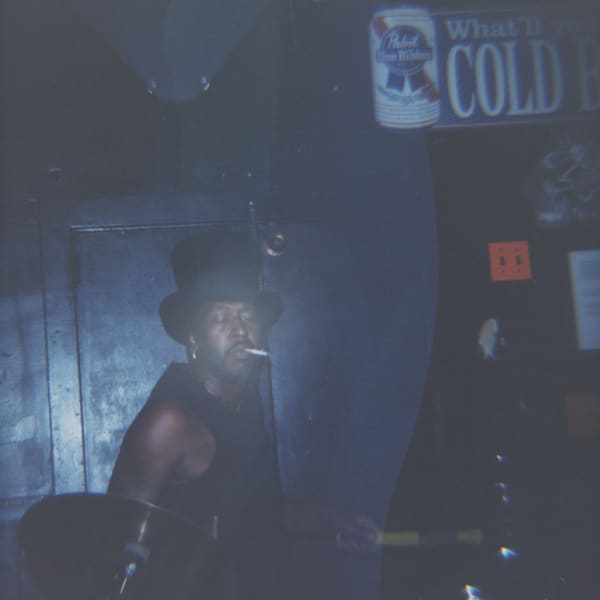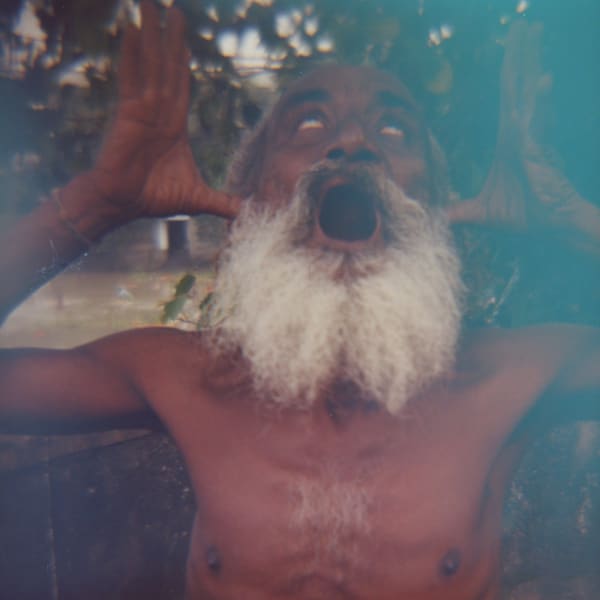Sean Lotman
A native of Los Angeles, Sean Lotman draws his inspiration from narrative fiction as well as cinema, his palette honoring the unreal colors of Technicolor films from the 1940s and 1950s. He creates the special, somewhat psychedelic atmosphere in his work through liberal color experimentation and an unorthodox dodge-and-burn technique in his darkroom. While printing his images, he is searching for a subjective feeling more resembling reverie than reality. The Sniper Paused So He Could Wipe His Brow is his fourth book. He lives in Kyoto, Japan, with his wife, Ariko, their son, Tennbo, and their dog, Monk.
"Originally a writer of stories, I am interested in the narrative potential of photography-- how pictures can be assembled to articulate a mood-- and the mood I am most concerned with aesthetically is one of surreality. A child of comic books, Twilight Zone episodes, and Technicolor musicals, I am interested in reconstituting realities parallel to ours, somewhat familiar bur rather not, like half-remembered dreams. As an American in Japan, essentially a stranger needing to adapt to a society unlike the one I've always known, I have, in turn, attempted to turn Japanese geography, people and signs into an imagination all my own, filtered through a psychedelically-infused color palette. It is a world of my own making, transposed upon my color darkroom prints. Vividly portrayed in reds, blues, blacks, and yellows, this is a land of people and place and visualised not as they are, but as they never could be."
Sniper Artist Statement: Memory has a fascinating way of forming narrative. We believe we recall something as it happened only to find evidence that events were in fact rather different. I'm intrigued by the flaw of misremembered pasts. Whatever facts are attached to an experience inevitably fade, while strange details are exaggerated and given primacy. I wanted to give form to this bewilderment with The Sniper Paused So He Could Wipe His Brow (The M Editions & IBASHO, 2021). Comprising 95 photographs drawn from twenty countries, shot over the span of 15 years, all of them handmade darkroom color prints taken with a Diana f+ toy camera, the images feel rooted out from any discernible reality, akin to recollected dreams (which have the same eerie elusiveness of long-past moments). The book is designed in three parts, with a split binding in Parts I & III, so that the reader becomes a collaborator, mixing and matching different sets of photographs in a kind of Choose-Your-Own-Adventure experience. Thus, every time you engage with the book, your reading of it will be unique depending on how you arrange the book's flaps. Sniper reminds the reader that our understanding of things evolve with time and nothing is quite like we remember it.
-
 Pompons are for Autumn, 2018
Pompons are for Autumn, 2018 -
 Heads in the trees, 2018
Heads in the trees, 2018 -
 "Untitled" Kaohsiung, Taiwan, 2018
"Untitled" Kaohsiung, Taiwan, 2018 -
 Pisces Sapien, 2017
Pisces Sapien, 2017 -
 A moment of heartbreaking nostalgia, Kyoto, 2017
A moment of heartbreaking nostalgia, Kyoto, 2017 -
 The Tobacco Lady, Kyoto, 2015
The Tobacco Lady, Kyoto, 2015 -
 Street Greetings, 2015
Street Greetings, 2015 -
 New Year's Day Prayers, Kyoto, 2015
New Year's Day Prayers, Kyoto, 2015 -
 A walk in the snow, 2015
A walk in the snow, 2015 -
 A Telephone Call, Kyoto, 2015
A Telephone Call, Kyoto, 2015 -
 A storm of flowers, 2015
A storm of flowers, 2015 -
 A Song in the Garden, Kyoto, 2015
A Song in the Garden, Kyoto, 2015 -
 A Place of Departures, 2015
A Place of Departures, 2015 -
 The Old Laughing Ladies, Aomori, 2014
The Old Laughing Ladies, Aomori, 2014 -
 Strolling, Kyoto, 2014
Strolling, Kyoto, 2014 -
 Somewhere out there, a Balladeer strums his Guitar, Tokyo, 2014
Somewhere out there, a Balladeer strums his Guitar, Tokyo, 2014 -
 Sand Therapeutics, 2014
Sand Therapeutics, 2014 -
 Sand and Sky, 2014
Sand and Sky, 2014 -
 Man in his Dreamstate, 2014
Man in his Dreamstate, 2014 -
 Kamakura Purple Sky, 2014
Kamakura Purple Sky, 2014 -
 Iceskating Panda, 2014
Iceskating Panda, 2014 -
 Horseman, 2014
Horseman, 2014 -
 Hisashiburi, 2014
Hisashiburi, 2014 -
 Gosho Silhouette, 2014
Gosho Silhouette, 2014 -
 Ghost Town Taxi, 2014
Ghost Town Taxi, 2014 -
 Blue, 2014
Blue, 2014 -
 An Empty Suit, Kyoto, 2014
An Empty Suit, Kyoto, 2014 -
 A Morning Eclipse, Kyoto, 2014
A Morning Eclipse, Kyoto, 2014 -
 A Man is not a Country, Tokyo, 2014
A Man is not a Country, Tokyo, 2014 -
 The Headless Monk, Kyoto, 2013
The Headless Monk, Kyoto, 2013 -
 Nocturne arbor, 2013
Nocturne arbor, 2013 -
 Ghosts in the Garden, 2013
Ghosts in the Garden, 2013 -
 A Place of Prayers, 2013
A Place of Prayers, 2013 -
 There is Someone for Everyone, Osaka, 2012
There is Someone for Everyone, Osaka, 2012 -
 Riverside Rendezvous, Kyoto, 2012
Riverside Rendezvous, Kyoto, 2012 -
 A stroll in the garden, 2012
A stroll in the garden, 2012 -
 Matsuri Princess, 2011
Matsuri Princess, 2011 -
 "Our Jukebox Youth" New Orleans, USA, 2011
"Our Jukebox Youth" New Orleans, USA, 2011 -
 Yakushima masks, 2010
Yakushima masks, 2010 -
 Snow Dawn, 2010
Snow Dawn, 2010 -
 Rainbow bridge, 2010
Rainbow bridge, 2010 -
 "Towards the Oasis" Kutch, India, 2010
"Towards the Oasis" Kutch, India, 2010 -
 "Man Walks on Water" Gokarna, India, 2010
"Man Walks on Water" Gokarna, India, 2010 -
 "Calcutta Man" Calcutta, 2010
"Calcutta Man" Calcutta, 2010 -
 Meditation interrupted, 2008
Meditation interrupted, 2008 -
 Kyoto moss, 2008
Kyoto moss, 2008 -
 A home in the sky, 2008
A home in the sky, 2008 -
 "Untitled" Mt. Abu, India, 2008
"Untitled" Mt. Abu, India, 2008 -
 "Out Yonder, Our Future," Mt. Nemrut, Turkey, 2008
"Out Yonder, Our Future," Mt. Nemrut, Turkey, 2008
-
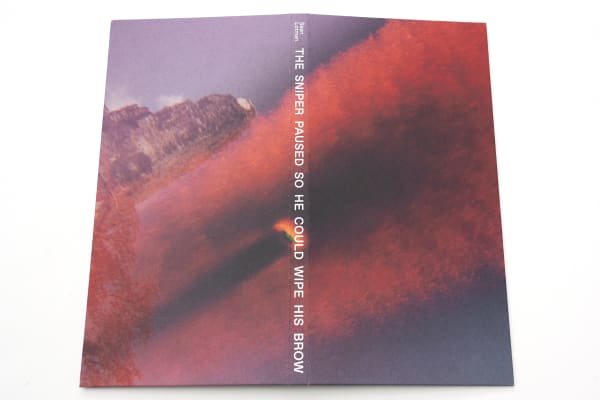
THE SNIPER PAUSED SO HE COULD WIPE HIS BROW - Sean Lotman
red cover Lotman, Sean, 2021hard cover, 96 pagesRead more
Publisher: IBASHO & the (M) éditions
Dimensions: 150 x 300 mm -

THE SNIPER PAUSED SO HE COULD WIPE HIS BROW - Sean Lotman
yellow cover Lotman, Sean, 2021hard cover, 96 pagesRead more
Publisher: IBASHO & the(M) éditions
Dimensions: 150 x 300 mm -
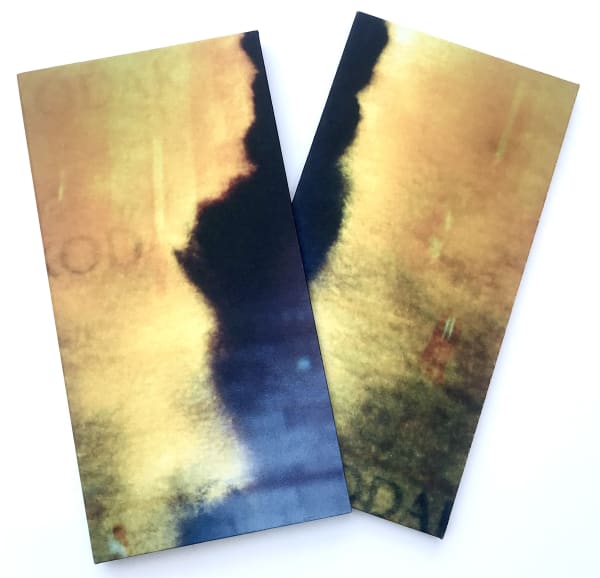
THE SNIPER PAUSED SO HE COULD WIPE HIS BROW - Sean Lotman
Special Edition with print - yellow cover Lotman, Sean, 2021hard cover in slipcase, 96 pagesRead more
Publisher: IBASHO & the (M) éditions
Dimensions: 150 x 300 mm -

THE SNIPER PAUSED SO HE COULD WIPE HIS BROW - Sean Lotman
Special Edition with print - red cover Lotman, Sean, 2021hard cover in slipcase, 96 pagesRead more
Publisher: IBASHO & the (M) éditions
Dimensions: 150 x 300 mm
-

#53 Toshi-City
Summer group exhibition 25 Jun - 28 Aug 2022For the 2022 Summer group exhibition IBASHO has chosen the city ('Toshi' in Japanese) as a theme. Who thinks of Japanese cities, thinks of Tokyo first. This hypermodern city in...Read more -

#49 - IBASHO & the (M)éditions present 'The Photo Book as Object'
20 Nov 2021 - 9 Jan 2022After the successful launch of 6 newest publications at Paris Photo 2021, IBASHO & the (M)éditions are proud to present the exhibition 'The Photo Book as Object' in IBASHO's gallery...Read more -

#38 Parallel Crossings - Ariko Inaoka & Sean Lotman
25 Jan - 8 Mar 2020IBASHO is delighted to introduce two new artists with the exhibition 'Parallel Crossings'. Ariko Inaoka and Sean Lotman are wife-husband on a 'parallel' course with geographic 'crossings' in their photographic...Read more


